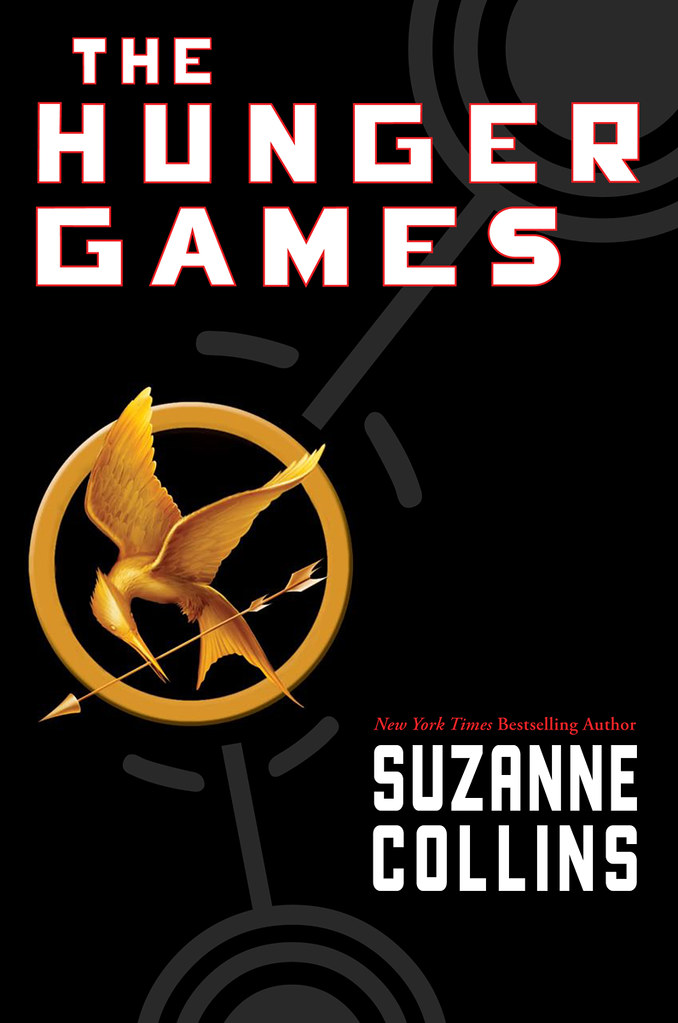A full review on The Hunger Games
April 20, 2023

Worldbuilding
Right away, Collins introduces you to the setting of Panem, a future version of America. The Capitol and twelve still-standing districts, each specializing in an industry, make Panem. The Capitol houses the controlling central government, the wealthy, and the privileged. After a civil war, the Capitol created the Hunger Games to show who is in control. The Hunger Games occur each year, in which 24 district teens fight in an arena until there is one victor. Reapings, where everyone 12-18 gets their name put into a bowl, are how they choose tributes. The number of times a name is in the bowl compounds each year. Kids can also have their names put in more times in exchange for scarce rations of food throughout the year. They draw one male and one female tribute from each district to be in the games. You learn the most about District 12 as it is the home of Katniss Everdeen, the main character and narrator. It is the poorest district, and it specializes in coal mining. It consists of the merchant class, pale people with blue eyes and blonde hair, and the Seam, home of the coal miners. The people of the Seam live on the outskirts of the district. They have olive skin, dark hair, gray eyes, and are poorer than the merchants. There is no real divide between the classes except that most people marry within their class. Collins’s worldbuilding is simple yet effective. She gives you an understanding of how things work but does not overwhelm you with details. As needed, she sprinkles in extra information about Panem throughout the story. For example, when Katniss is in the arena, you learn about 11, the agriculture district. Unlike District 12 where minework starts at age 18, fieldwork starts before the age of 12. It is the second poorest district and their government is much stricter than 12’s.
Summary
The story starts on the morning of the reaping of the 74th Hunger Games. Against all odds, the female tribute reaped is 12-year-old Primrose, 16-year-old Katniss’s sister. Katniss volunteers to go in her place, an unprecedented act in most districts. In 12, there have only ever been two victors, and death is almost guaranteed. The male tribute is the baker’s son, Peeta Mellark. On the train ride to the Capitol, you meet Haymitch Abernathy, the living victor/mentor of District 12. He is a chronic drunk and does not try to help the tributes until convinced. Once in the Capitol, there is an introductory tribute parade. Katniss and Peeta’s stylists dress them in unforgettable costumes. This boosts their chances for sponsors which will help them in the arena. Before the games start, there is an interview with each tribute. At Peeta’s, he reveals his crush on Katniss, coining them “star-crossed lovers” in the eyes of the Capitol. In the arena, an announcement reveals a rule allowing two victors if they are from the same district. This leads to the eventual allyship of District 12. Katniss faces many struggles like a raging fire, severe burns, a gang of tributes, and the death of her ally. She also has many successes like sponsor gifts, successful sabotage, and lifesaving medicine. These, along with her many skills, help her into the last three, including Peeta. At this point, the gamemakers release dog-like “mutts” in the arena. Mutts are any Capitol-created creatures. This forces everyone to the cornucopia in the center of the arena. The mutts kill the other tribute, leaving Katniss and Peeta. The announcer then comes back to revoke the rule allowing two victors. In defiance of this, they each put nightlock, a deadly berry, in their mouths. Peeta had found it earlier in the game but did not eat it because Katniss knew what it was. They kept it to use on another tribute but did not need to until this point. The announcer takes back his statement yet again, and the two tributes become victors. Collins wrote a compelling and emotional story. She included important themes, commentary, and parallels of society. The book talks about class, both within the districts and Panem as a whole, rebellion, ethics, and more.
What was good and what could have been better
The Hunger Games is a popular and important book that many would classify as a modern classic. It has had millions of copies sold and over four million five-star ratings on Goodreads. It even led to two sequels, a prequel, and a movie series. Like her worldbuilding, Collins’s writing is simple yet effective. It is easy to read and understand, making it accessible to people as young as 10 and as old as 100. The characters are well-developed and portray real emotions and reactions. It is the kind of book you want to read in one sitting and then reread throughout your life. Each time you do, you will pick up on new things. When Collins did so much right within the book it is hard to find things she could have improved. Some would argue that the story is too grim, but the point of the story is to be dark. It shows the absurdity of the situations in the book, using them to parallel real life. Others might say Katniss is selfish and lacks empathy, but again, her character is this way on purpose. She sometimes makes questionable decisions and thoughts, but that is the point. She is not supposed to be the most likable character ever, but a realistic one. Her situations force her to think about survival over ethics. She is real rather than ideal. For these reasons, there is nothing to change or improve about the book.
Symbols and quotes
There are many important symbols and quotes in The Hunger Games. Peeta and dandelions is one of the first symbols introduced. In the months following Katniss’s dad’s death, the Everdeens struggle a lot. At eleven years old, Katniss has to step up as the main provider for her family. One day, she sat under a tree by the bakery in the pouring rain. As she wondered how she would continue feeding her family, Peeta burnt a batch of bread. When sent to feed the loaves to the pigs, he threw some to Katniss. For the first time in forever, the Everdeen’s did not go to bed starving. The next day Katniss saw dandelions in the meadow, the first sign of spring. This was when she realized she would use her hunting and foraging skills to keep her family fed. Peeta symbolized the spring dandelion. He symbolized hope, survival, and rebirth. Another symbol is the mockingjay – a failed experiment of the Capitol. They modified mockingbirds in labs to create jabberjays. Jabberjays were mutts that could repeat human conversations. Their purpose was to spy on the districts and report back. This backfired when rebels realized what was going on and fed the jabberjays lies. The Capitol then sent all male jabberjays to the wild in hopes of the species dying off. The problem was when they bred with female mockingbirds, and the mockingjay was born. Mockingjays have the ability to replicate melodies but not words. They are a result of the Capitol’s failure and exist in spite of the Capitol’s intents and wishes. Because of this, they are a symbol of rebellion and defiance against the Capitol. One more symbol of this story is Rue. Rue is a twelve-year-old tribute from District 11. She is very clever and innocent, and she reminds Katniss of Prim. The two become allies about halfway through the games until Rue dies. Katniss then shoots the killer and mourns her death. She sings as Rue takes her last breath and places flowers around her body. The Capitol sees this as an act of defiance. It portrays tributes as real people with emotions rather than pieces of entertainment. Instead of seeing this as being one step closer to winning, Katniss placed value on Rue’s life and death. Rue is a symbol of innocence and defiance. Her death led to Katniss’s first direct kill in the games, also killing a part of Katniss’s innocence. As far as quotes, a motto surrounding the games is “may the odds be ever in your favor.” This is important in the way that it emphasizes how the odds are never in your favor. You see this at the reaping when Prim is the female tribute picked. It is her first year participating in the reaping and she only has one slip in the bowl. Yet kids like Katniss and Gale have 20 or even 40 slips. The odds were very much in Prim’s favor, yet she still was not safe. A final quote to highlight is at the end of the book. The games have ended and Katniss and Peeta’s winning interview is concluding. The interviewer tells the audience to tap in tomorrow to watch the final interviews. To this, Katniss thinks “as if they have a choice.” The Capitol gives the illusion of choice to the Capitol people so they believe they are on the same side. They want them to think they have privilege when in reality they are obedient slaves to the Capitol. Collins has a skill in creating meaningful symbols and quotes. They force you to think deeper about the story.

